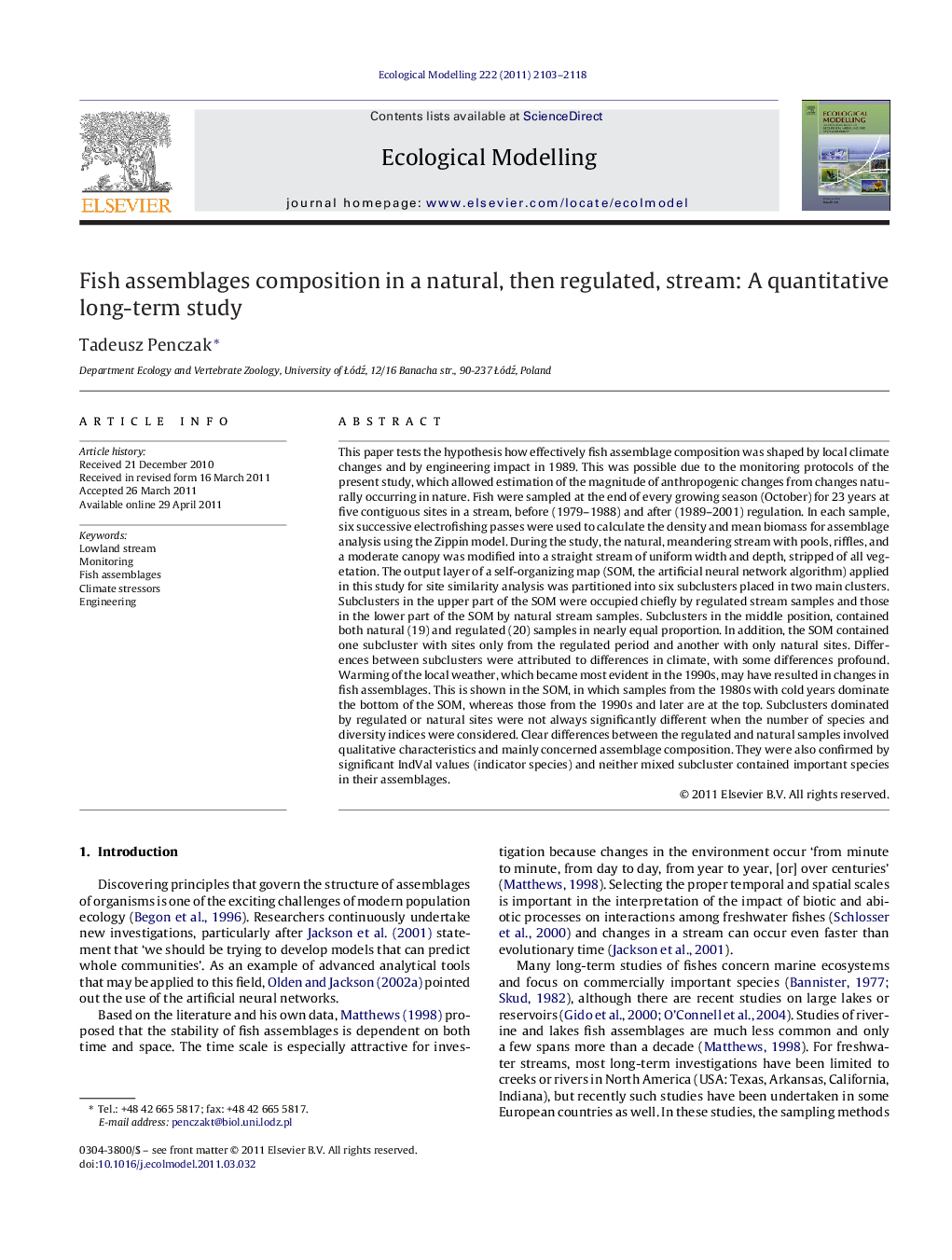| Article ID | Journal | Published Year | Pages | File Type |
|---|---|---|---|---|
| 4376923 | Ecological Modelling | 2011 | 16 Pages |
This paper tests the hypothesis how effectively fish assemblage composition was shaped by local climate changes and by engineering impact in 1989. This was possible due to the monitoring protocols of the present study, which allowed estimation of the magnitude of anthropogenic changes from changes naturally occurring in nature. Fish were sampled at the end of every growing season (October) for 23 years at five contiguous sites in a stream, before (1979–1988) and after (1989–2001) regulation. In each sample, six successive electrofishing passes were used to calculate the density and mean biomass for assemblage analysis using the Zippin model. During the study, the natural, meandering stream with pools, riffles, and a moderate canopy was modified into a straight stream of uniform width and depth, stripped of all vegetation. The output layer of a self-organizing map (SOM, the artificial neural network algorithm) applied in this study for site similarity analysis was partitioned into six subclusters placed in two main clusters. Subclusters in the upper part of the SOM were occupied chiefly by regulated stream samples and those in the lower part of the SOM by natural stream samples. Subclusters in the middle position, contained both natural (19) and regulated (20) samples in nearly equal proportion. In addition, the SOM contained one subcluster with sites only from the regulated period and another with only natural sites. Differences between subclusters were attributed to differences in climate, with some differences profound. Warming of the local weather, which became most evident in the 1990s, may have resulted in changes in fish assemblages. This is shown in the SOM, in which samples from the 1980s with cold years dominate the bottom of the SOM, whereas those from the 1990s and later are at the top. Subclusters dominated by regulated or natural sites were not always significantly different when the number of species and diversity indices were considered. Clear differences between the regulated and natural samples involved qualitative characteristics and mainly concerned assemblage composition. They were also confirmed by significant IndVal values (indicator species) and neither mixed subcluster contained important species in their assemblages.
► A hypothesis that fish assemblage composition was shaped by local climate and engineering was tested. ► Differences were affected mostly by differences in climate; engineering was insignificant. ► The investigation is the longest and detailed study on fish assemblage persistence in a small stream. ► Streams are being destroyed not only by human activity, but also by climate stressors.
